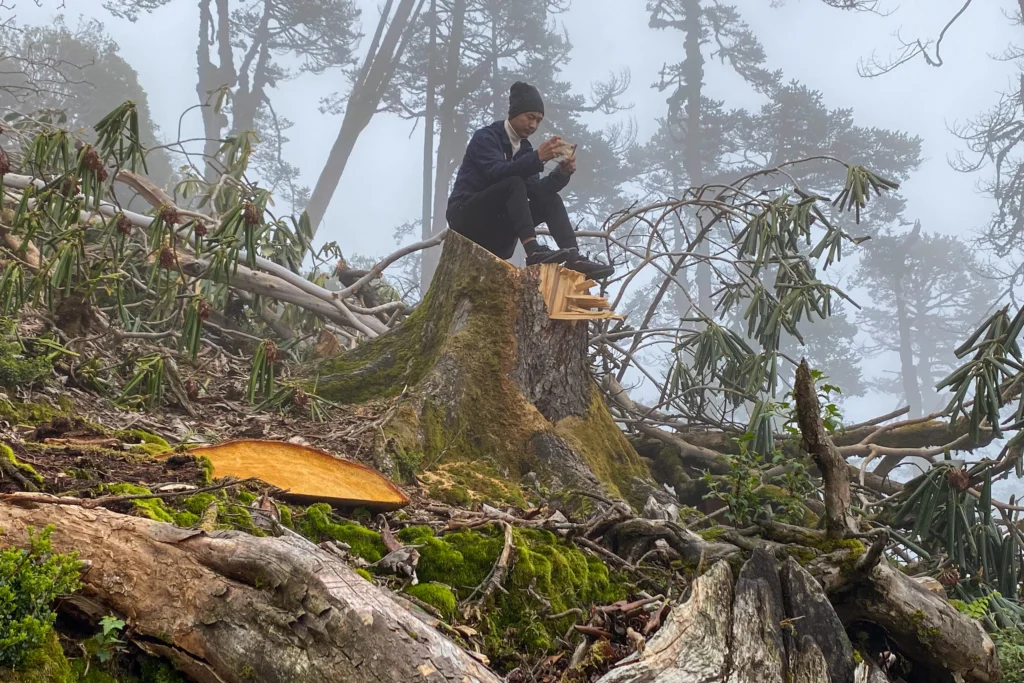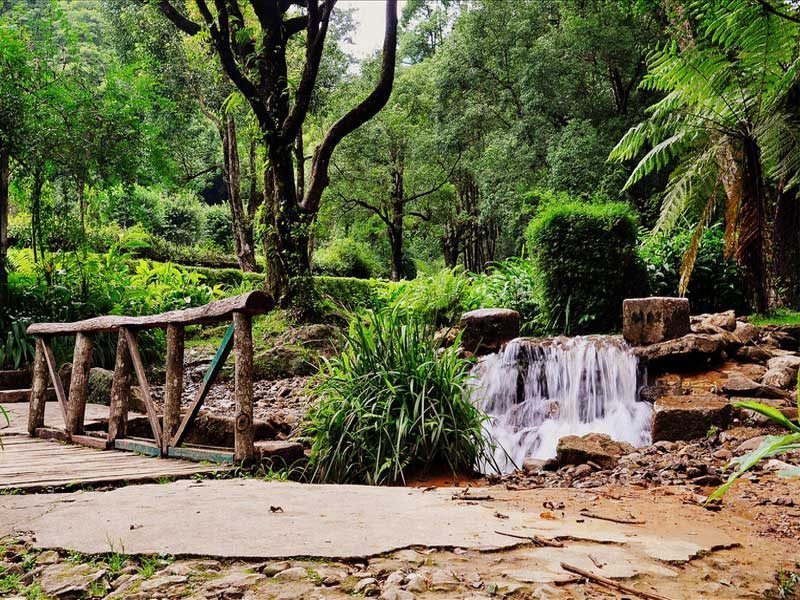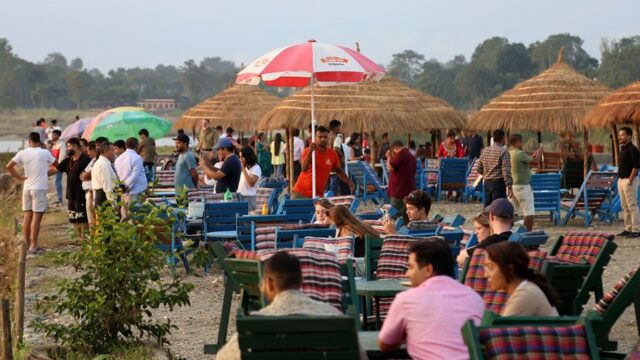Nepal is currently witnessing growing tensions among the federal, provincial, and local governments due to unresolved disputes over the distribution of natural resources and tax revenues. In last Jestha (May/June), the Commission for the Investigation of Abuse of Authority (CIAA) filed a corruption case against Gajendra Maharjan, the Mayor of Godawari Municipality in Lalitpur, and 13 others, accusing them of misappropriating revenue worth Rs. 1.04 billion. They were accused of evading taxes by undercharging for the extraction of stones, gravel, and sand within the municipality. However, three months after the case was filed, the Special Court ruled that Mayor Maharjan was not guilty.
The CIAA claimed that Godawari Municipality violated the provisions of the Bagmati Province’s Financial Act by setting lower tax rates in its own Financial Act, thereby committing corruption. The accused, including Mayor Maharjan and Deputy Mayor Muna Adhikari, were charged under Section 7(b) of the Prevention of Corruption Act, 2059. The Special Court clarified that the municipality passed its financial law every fiscal year, setting tax rates for natural resource exports, which was not in dispute. After Nepal adopted a federal system under the 2072 Constitution, authority over taxation and other matters was divided among the federal, provincial, and local governments.
All three tiers of government are exercising their constitutionally defined rights, including taxation. However, disputes regarding natural resource rights continue to arise. The tax issue in Godawari Municipality is just one example of such a dispute. This case reflects growing tensions between the three levels of government over the collection and utilization of taxes on natural resources. Article 221 of the 2072 Constitution grants managerial authority to local levels. According to Article 226, local levels can impose export taxes, but since they cannot sell the resources, collecting taxes under legal provisions does not constitute an offense under the Prevention of Corruption Act.
The court further stated that the accusations against the defendants were not substantiated by sufficient facts or evidence. However, Section 64(c) of the Local Government Operation Act, 2074, states that the province determines the tax rates and process for natural resources such as stones, gravel, slate, sand, limestone, mica, and more, while municipalities collect them.
The court interpreted that the Local Government Operation Act contradicts the Constitution, so no action was taken against the Mayor, Deputy Mayor, or employees of Godawari Municipality regarding misuse of natural resources. This tax dispute between Bagmati Province and Godawari Municipality highlights ongoing issues in mobilizing natural resources under the federal system. With each level imposing taxes, competition and conflict among governments continue. Just like in trade, business, and administration, there are disputes in the taxation of natural resources.
The Federation of Community Forestry Users Nepal (FECOFUN) has been protesting against what it calls excessive taxation in the community forestry sector since the federal system was implemented. FECOFUN claims that due to a lack of clear tax policy, community forest user groups are forced to pay taxes to federal, provincial, and local governments.

Currently, provinces impose taxes on forest products collected by community forest user committees. For example, taxes on external sales of forest products are: 15% in Madhes Province, 10% in Bagmati, 30% in Gandaki, 25% in Lumbini, 15% in Karnali, and 25% in Sudurpaschim. Koshi Province has not yet determined its tax rate. FECOFUN objects to this triple taxation and has been organizing nationwide protests. The Supreme Court issued an interim order in 2080 Fagun (Feb/March 2024) directing provincial governments not to collect taxes on community forest products.
After Gandaki Province imposed a 30% tax, FECOFUN filed a case demanding its cancellation. The Supreme Court then ordered Gandaki Province not to implement the 30% tax immediately. FECOFUN Chair Thakur Bhandari said the struggle against excessive taxation continues and insists only the minimum 10% tax outlined in the Local Government Operation Act should apply. He said, “Local governments are charging 10%, provinces are charging 20–35%, and the federal government takes up to 25% for its consolidated fund. However, community forests should not have to pay taxes at all, as they are non-profit and work for community welfare. Still, we are ready to pay the minimum 10%.”
Bagmati Province MP and forest activist Bharati Pathak suggested resolving tax disputes by coordinating between the three tiers of government through a unified tax system. “The process of tax collection and resource distribution is not fair. There needs to be serious discussion to resolve this within the federal structure,” she said. Like forests and mines, water is another natural resource facing disputes between the three levels of government. Local governments demand royalties from the central government for using water sources in their areas, creating conflict.
For example, locals in the Melamchi Water Supply Project area have warned of halting services unless they receive a share of the revenue from water sold in Kathmandu. Helambu Rural Municipality Chair Nima Gyalsen Hyolmo said 25% of the income from Melamchi water should go to the local level. So far, this demand has not been addressed. “Melamchi water is not distributed for free in Kathmandu; revenue is generated. We’ve long demanded 25% of that income. If not fulfilled, water supply to the Valley will be disrupted after the next monsoon,” he warned.
Hyolmo explained that 25% of the profits are being demanded to fund local development, water source conservation, disaster management, and other programs. A few years ago, a dispute arose over the Kaligandaki–Tinau Diversion Project. Locals from Syangja, Palpa, and Tanahun protested when the federal government pushed the project without Gandaki Province’s consent. The project planned to divert Kaligandaki River water to the Tinau River to provide irrigation in Province-5 (now Lumbini Province) but was halted after an interim order from the Supreme Court in 2078.
However, in 2081 Kartik (Oct/Nov 2024), the court dismissed the petition, stating early environmental damage assessments were premature. The court ordered measures such as proper environmental assessment, sustainable resource use, a minimum 20% water flow in Kaligandaki, and a ban on dumping waste into the river.

Another example is the conflict between Lumbini Province and Devdaha Municipality in Rupandehi over riverbed mining. The municipality tried to contract out riverbed extraction, but the Division Forest Office under the province blocked it, leading to a dispute. However, Mayor Dhruba Prasad Kharel now says there is no conflict. In Madhesh Province, the Sagarnath Forest Development Project, managed under a federal plan, is another source of contention. The province claims the federal government overstepped constitutional bounds and filed a case in the Supreme Court in 2076. The court issued an interim order preventing the federal government’s decision from being implemented.
Uddhav Bahadur Ghimire, Secretary of the Ministry of Forests and Environment under Madhesh Province said the dispute has affected project operations, with staff not being paid for eight months, putting the project’s future at risk. These conflicts indicate that tensions over natural resources may intensify. Disputes over the exploitation and royalty distribution from resources such as hydropower, mines, forest products, and riverbed materials are recurring.
Acting Chair of the National Natural Resources and Fiscal Commission, Juddha Bahadur Gurung, stated that legal ambiguities, inconsistent interpretations, lack of transparency, and unequal economic benefits have caused disputes among the three tiers of government.
He said, “Most conflicts involve water sources. One local government refuses to share with another. But the Constitution enshrines access to clean water as a fundamental right, so one local level cannot deny it to another. The commission has been offering evidence-based solutions to resolve such issues.”
Gurung added that these issues can be solved through research and coordination, but lack of manpower and funding presents challenges. “Clear laws are needed at the local level. Coordination and public awareness are essential. We have revised equalization grants to resolve disputes now considering geography in addition to population,” he added. Unequal distribution of natural resource royalties often sparks disputes. A study by the National Natural Resources and Fiscal Commission found major discrepancies in royalty distribution.
According to the report, royalty collection and distribution vary based on the nature of resource usage. Madhes and Karnali provinces receive less than 2% of annual royalties, while Sudurpaschim receives under 5%. Bagmati Province receives the most, averaging 35% over five years. Koshi, Gandaki, and Lumbini receive 17%, 19%, and 22%, respectively.
The commission suggests Nepal should develop its royalty distribution model suited to its low royalty income context, learning from richer countries. Even before the Constitution, Nepal had practices for collecting and distributing royalties from hydropower, forests, and minerals, though they were not legally well-structured. Now, constitutional and legal mechanisms regulate royalty sharing from mountaineering, electricity, forests, and minerals among the three levels of government.






